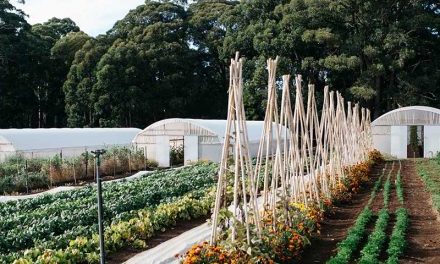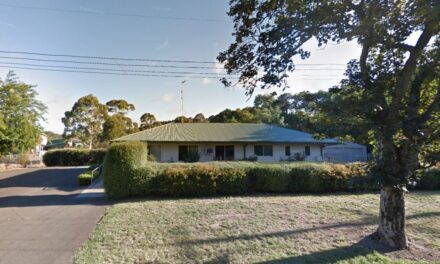Lesley Hewitt
One of the key annual tasks for Councillors is to prepare and pass a budget for the new financial year that ensures that services can continue, staff be paid, roads maintained and projects already underway, continued, not stalled. Council provides over 100 services to all of us in the community, including libraries, childcare and kindergarten services, health inspections of premises that provide food (for example cafes, food manufacturing businesses and aged care facilities) and so on. And this occurs in line with actions decided by the 4-year Annual Plan that the community helps develop at the start of each Council term.
The development of this year’s budget (which started around February) has had its challenges – including the economic environment of rising costs and limited funding – and this has resulted in a business-as-usual budget. Of course, we would all like to do more, but a key obligation for Councillors under the Local Government Act 2020 is to be fiscally responsible, recognizing both our physical and financial resources, and at the same time, balancing what the community across the whole Shire expects.
The 2023/24 budget includes $40m for the provision of the full range of services and a further $19m for capital projects including $1m for the most urgent works on the Daylesford Town Hall, which include the replacement of both the roof and the electricals. $3.3m has been provided for expenditure on roads, drainage and footpaths across the Shire and repairing those flood damaged roads that Council is responsible for will remain a priority. Rates have increased by 3.5%, which is consistent with the rate cap applied by the State Government.
Rural health has been in the news recently, highlighting the poorer health outcomes experienced by those of us living in rural Australia. The National Rural Health Alliance (NHRA), a group of 47 national health related organizations have released a report that shows that each person in rural Australia is missing out on nearly $850 a year of healthcare access. Staggeringly this equates to a total annual rural health spending deficit of $6.5 billion.
Last week the Australian Institute of Health and Welfare released its mortality data (see Mortality Over Regions and Time (MORT) books, MORT Excel workbooks – Australian Institute of Health and Welfare (aihw.gov.au) ).
This data shows that between 2017 and 2012 there were 729 deaths in Hepburn Shire of which 33% (241) were considered by the AIHW to be premature. The two are related. Children and adults across our Shire have several health risk indicators that are worse than the state average – obesity, diabetes, low levels of physical activity, mental health issues, alcohol, and drug issues. Access to preventative and treatment services are critical and for that, equity in funding is needed.
But what’s Council’s role in health prevention? How does that link to budget decisions? One example of a direct service is Child and Maternal Health which Council funds in partnership with the state government. In addition to direct service provision, one of the key responsibilities of Council is the provision of sport and recreation facilities and the ongoing management of these assts. There is an established link between physical activity and mental and physical well-being as well as community connections and social inclusion. So that’s one of the key benefits of Council investing in assets such as the Victoria Park, Daylesford, the Creswick Bowls Club, the Trentham Sportsground and it explains why there is money in the budget for the Glenlyon Recreation Reserve pavilion, the Clunes Sportsground Masterplan, the Creswick Trails and why the Aquatic Strategy is funded. And of course, we would all like modern, up to date, accessible facilities across the whole Shire. And that’s where Councillors and officers must make tough decisions about what can be achieved.
And of course, in addition to investing in infrastructure (Glenlyon Pavilion, Creswick Trails) we must plan for the future (Clunes Masterplan and Aquatic Strategy). And consider what is needed (as opposed to what is wanted)? What is equitable? What can we afford? What are the benefits to residents in particular wards? What will benefit all residents across the Shire because of the investment and how will they benefit? And what is that cost/benefit ratio?
And at the same time Council budget is used to support other initiatives that may have an impact on the health of residents. Two such initiatives are occurring in July. Council is running an accredited Youth Mental Health First Aid training for community members, so they can better support young people who might be experiencing mental health challenges. The training is a blended workshop with four hours of online training (done in your own time) and one full day of face-to-face training. It’s free and open to anyone aged over 18 years. At the time of writing there are still places available. The face-to-face session will be held on Sunday 30 July from 9:30am to 5:30pm at Creswick Neighbourhood Centre. If interested, you can register at www.hepburn.vic.gov.au/Young-people
Older residents can also attend a positive Aging Expo on 27th July at Trentham. Details can be found at Positive Ageing Expo Hepburn Shire Council 27th July.
Finally last week was NAIDOC week. The theme this week was For Our Elders. I attended an interesting and thoughtful conversation at the Daylesford Neighbourhood House on 9th July between Harley Dunolly Lee, a Djaara man who is undertaking a PHD in linguistics on reinstating Djaara language and Professor Barry Golding, a member of our Reconciliation Advisory Committee. The conversation was well-attended. A co-operation between Djaara, Hepburn Shire (through our RAP, our Reconciliation officer (Caroline) our inclusion officer (Brett)) and Daylesford Neighbourhood House. Council does have a Reconciliation Action plan and last year endorsed the Uluru Statement From the Heart.
It’s worth noting that without an approved budget, none of these activities could have occurred.
Lesley Hewitt is the Deputy Mayor of Hepburn Shire and an elected councillor for Birch Ward.
Councillor Columns are a regular feature in The Wombat Post. We offer this space as an information channel from Council to the community. Councillor Columns are not subject to editorial review by our editorial committee but are published as we receive them from our elected Councillors.





